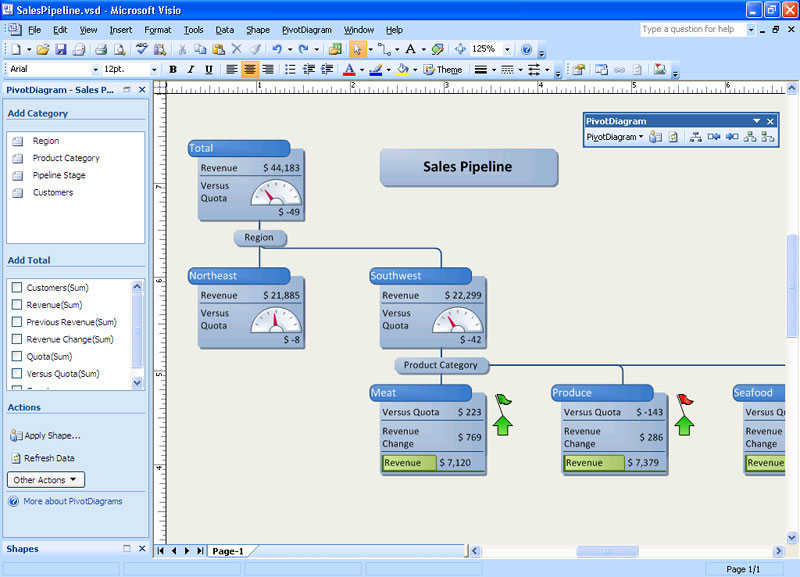

Existing UML and Database diagrams can be opened in the new Visio, but they are effectively frozen for editing since the previous feature set has been removed.
#VISIO 2013 PRICE CODE#
Also – just like in recent releases – there is no ability to go from diagram to code or database. Specifically, there is no ability to generate a diagram from existing code or a database definition. We place a strong emphasis on diagramming and sharing instead of rigorous modeling.
#VISIO 2013 PRICE SOFTWARE#
The new software and database diagramming capabilities in Visio represent a departure from the capabilities of previous versions. It is also possible to create or modify a diagram through code. Developers can programmatically walk the diagram to understand the objects, properties and relationships defined by the shapes. The shapes on the canvas directly define the design. Where the previous diagrams maintained a data model behind the scenes that was inaccessible, the new software and database diagrams fully expose their details through Visio’s API. It seems only natural that developers would want to write code to automate their use of Visio diagrams, and we heard many requests to allow all the diagram information to be extracted. The collaboration features in Visio and Visio Services allow a team to effortlessly get feedback on ideas or communicate the latest design. If the document is stored on SharePoint, everyone can quickly view and comment on the diagram in their browser thanks to Visio Services.

The new Visio makes it easy for multiple people to collaborate on a document through capabilities such as coauthoring and commenting. People often create software and database diagrams in Visio to share information across the team. An upcoming post will describe the new editing experience for software and database diagrams in more detail. We’ve unlocked the shapes so that you can utilize all the productivity improvements in Visio to get your work done faster. We made it easy to build, modify and format your diagram without launching a bunch of dialogs to enter information. The new diagram templates in Visio emphasize the on-canvas experience. Previously, diagrams were manipulated through a complex set of wizards and dialogs, and much of the normal editing and formatting in the diagram was locked.

This has been a consistent point of feedback from customers. Next, we wanted to make it easier to work with the diagrams directly on the diagram canvas. Chen’s & UML are new notational formats this release. The database diagrams have a new look as well, and there are four diagram templates to choose from: IDEF1X, Crow’s foot, Chen’s & UML notations. The UML diagrams match the UML 2.4 standard, and templates are available for the five most popular diagram types: Class, Sequence, Use Case, Activity and State.

#VISIO 2013 PRICE PROFESSIONAL#
In this release we are introducing all new shapes that look great and allow you to create modern, professional diagrams. Our UML diagrams lagged far behind the current UML standard, and both sets of diagrams looked old and tired. First, the diagrams have been completely modernized. This release marks a new approach to software and database diagramming in Visio. We have addressed this feedback in the new Visio with a significant refresh of the UML and Database templates. As a result the Unified Modeling Language (UML) and Database diagrams in Visio are widely used today by an enthusiastic audience, and our developer and IT community provide invaluable feedback on these diagram types. They recognize the benefits of visualizing complex systems to understand relationships and dependencies, and Visio makes it easy to communicate and socialize designs across the team. Developers and IT professionals frequently use Visio to design and document software and database systems.


 0 kommentar(er)
0 kommentar(er)
